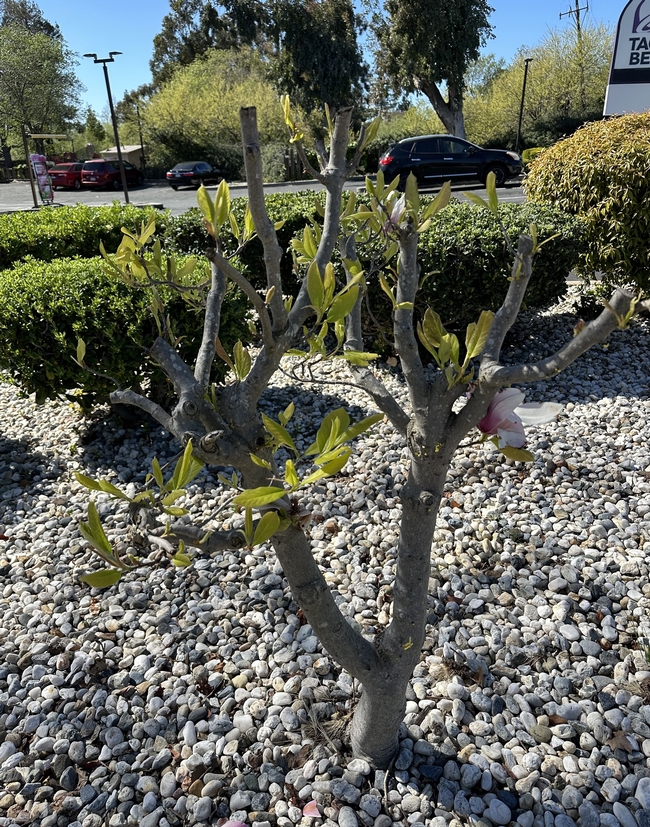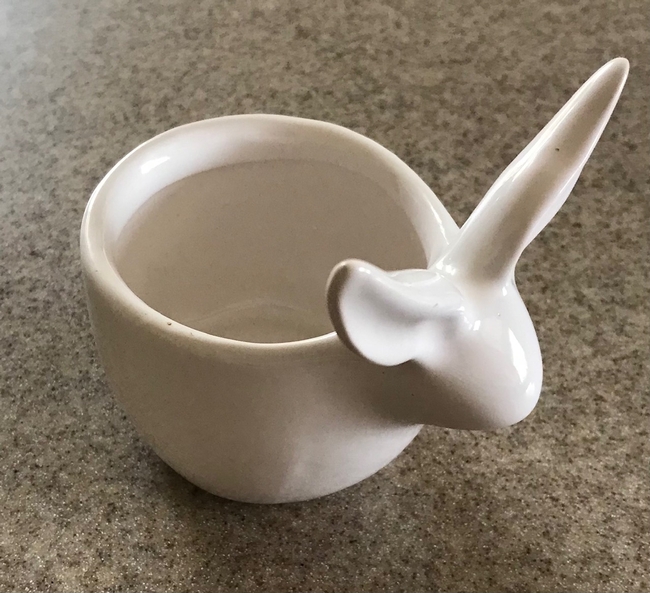UC Gardening Blogs
Magnolia Mayhem
We live near a fast food restaurant that doesn't have much landscaping, mostly white rocks and few scrubby plants. But it also has six compact, deciduous, spring-flowering magnolia trees planted in two groups of three that are quite charming. Even smaller magnolias can exceed 8' tall, but these magnolias have been hard pruned to maintain a size of approximately 4' x 4' for over twenty years. Perhaps the magnolias weren't the right choice for the location if they had to be maintained in such a compact form, but whoever pruned them did it well. The plants were healthy, didn't have any obvious pruning cuts, and bloomed spectacularly each year with with pale-pink to white flowers.
But not this year. This spring I noticed that one group of three trees had their limbs decapitated. The other trio of plants appeared to be untouched. I took these photos just after peak bloom when the trees were leafing out. Compare the pruned trio of plants to the other trio. The pruned trio has stumpy limbs with a few leaves on sparse branches and very few flowers. The other trio of plants has lush foliage, more natural branching, and previously was covered with flowers. Why do they look so different?
When pruning deciduous magnolias, many gardening experts say “don't do it” unless preventative maintenance is required. Magnolias don't require regular pruning. But sometimes there is a good reason to prune – the health of the tree, safety, to prevent a limb growing into a wrong location (like a pathway), to remove crowded or weak branches, etc. A common mistake, however, is planting a tree or shrub in the wrong location. If a plant has to be pruned continuously or heavily to fit its location, then it is likely the wrong plant for that spot. (I'll admit that I'm guilty of this error, including with my own compact deciduous magnolia, but perhaps that's a blog for another day.) These six magnolias must be pruned regularly to fit their landscape situation.
One factor explaining the difference between appearance of the two groups of plants might be when the pruning occurred. Timing matters. When pruning flowering plants, one must consider when the plant blooms and prune accordingly. Most spring-flowering plants, including magnolias, produce flowers early in the growing season on the previous year's wood. They should be pruned after flowering, ideally within a month after the blooms end. If one waits too long in the season to prune, then one might cut off the wood that supports the next year's flowers. Some websites, however, advise pruning deciduous magnolias in mid-summer to early fall to prevent the cuts from bleeding. This may then create the risk that some of the next year's flowers may get cut off. Given that the trio of hard-pruned plants have few flowers or leaves, my guess is that they were pruned late in the year, but the other group was not.
Another factor is how the pruning cuts were made. The pruned trio of plants had their limbs bluntly lopped off the top. Thisblog won't get into the details of pruning, but proper pruning involves the appropriate placement of the cut. In general, a cut should be about ¼” above a growth bud at approximately a 45-degree angle. Cutting too close to a bud can cause injury. Cutting too far away from a growth bud leaves a stub that will eventually wither and die. It will eventually decay and drop off, leaving an open patch of dead tissue. Aesthetically, it is better to cut a limb back to a fork or the trunk.
I admit I poked around in the foliage in the healthier looking trio of trees to see if I could find evidence of old pruning cuts, but then I became a little embarrassed to be examining the plants on a busy street corner. In a quick glance, however, I didn't see the same blunt cuts that were so visible with the other trio.
If a tree is hard pruned it likely will live, but it may send up a lot of water sprouts. A water sprout is a vigorous, skinny, upright shoot that grows on the crown or trunk of a tree, often as a result of over-pruning. Eventually water sprouts may regrow into “real” branches, but may create a thick tangled mess of weak branches in the meantime. Magnolias are notorious for producing water sprouts when pruned, so I'll be interested to observe whether this happens in the next year.
Regardless, the plants should recover. Maybe this is how they have been pruned for over twenty years and I never noticed before. But I thought that the difference in appearance was certainly striking enough to share.
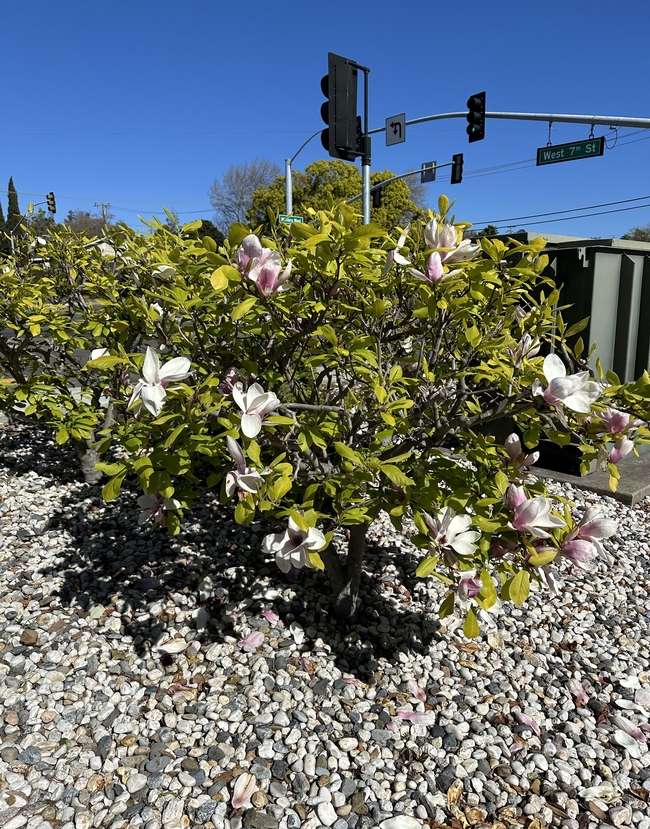
IMG 8569
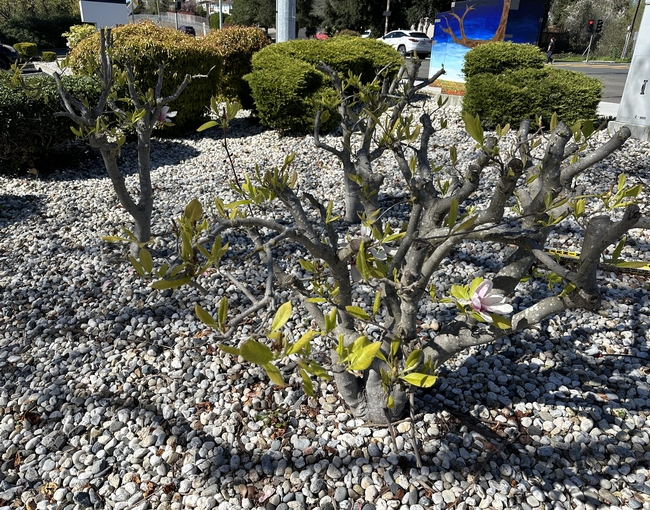
IMG 8567
Azaleas are a Great Perennial Choice
A colorful perennial has been brightening spring gardens for many weeks. Azaleas are the...
Clement Chow: Fruit Flies, Rare Diseases and the Accomplishments
Don't miss the UC Davis Department of Entomology and Nematology seminar by Clement...
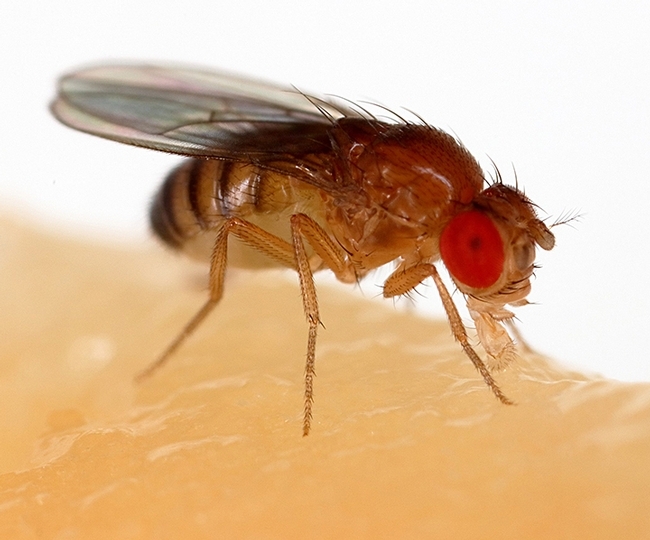
The fruit fly, Drosophila melanogaster, is commonly used for biological research in genetics. (Photo courtesy of Wikpedia)
A Kalanchoe by Any Other Name...
My mother bought me the cutest pink flowering plant in a little 2-inch bunny planter for Easter. She told me that she thought it was the prettiest Kalanchoe that she had ever seen. It was adorable, and just bursting with flowers. I was a little puzzled though. The leaves looked like classic scalloped Kalanchoe leaves, but the flowers were different. They looked like a supercharged Kalanchoe on steroids. I noticed that the label on the bottom of the planter said Calandiva.
The World of Succulents website and the Calandiva.com website helped to clear things up. Kalanchoe blossfeldiana is the scientific name for the typical florist Kalanchoe that we all know and love. It has 4 petals to each blossom. In 1998 a grower found a mutant plant whose blossoms had 32 petals per flower. After 4 years of research and careful breeding, growers were able to release this cultivar to the public as Calandiva. So, the official scientific name is Kalanchoe blossfeldiana ‘Calandiva'. It is now available in many colors and is extremely popular.
It is only hardy in USDA zones 10-12, so for most of us, it is grown as a houseplant. Calandiva needs essentially the same care as other Kalanchoe. They need light to flourish. They also need well-draining soil and to be able to dry out between waterings.
Now that I knew what I was dealing with, I looked at my Calandiva and noticed that this full, tall, blooming plant was in a small 2-inch pot. Sure enough, when I turned it over, roots had grown out the bottom. So, I repotted it in a 4-inch pot so it will have some room to stretch out. It seems to be very happy in its new home. According to the experts I can expect to enjoy the blossoms for 4-6 weeks. Thanks, Mom!
California Dogface Butterfly Steals the Show
The California dogface butterfly stole the show at the Bohart Museum of...
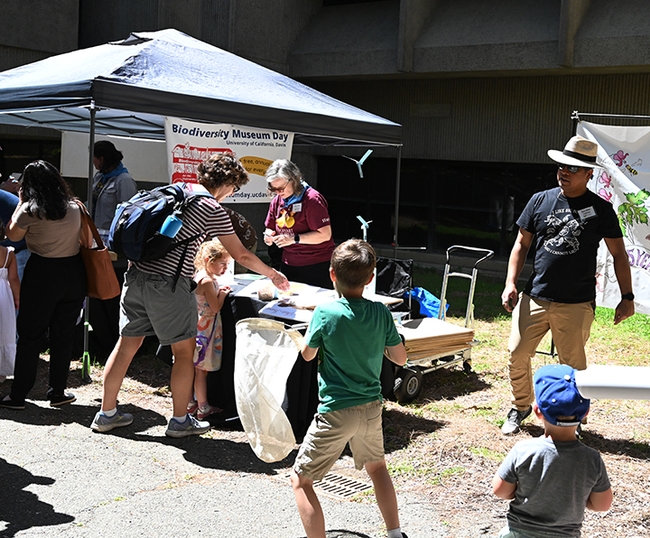
Bohart Museum graduate student and researcher Socrates Letana tosses paper butterflies to the net holders, as Professor Fran Keller (background) of Folsom Lake College staffs the California butterfly table. (Photo by Kathy Keatley Garvey)
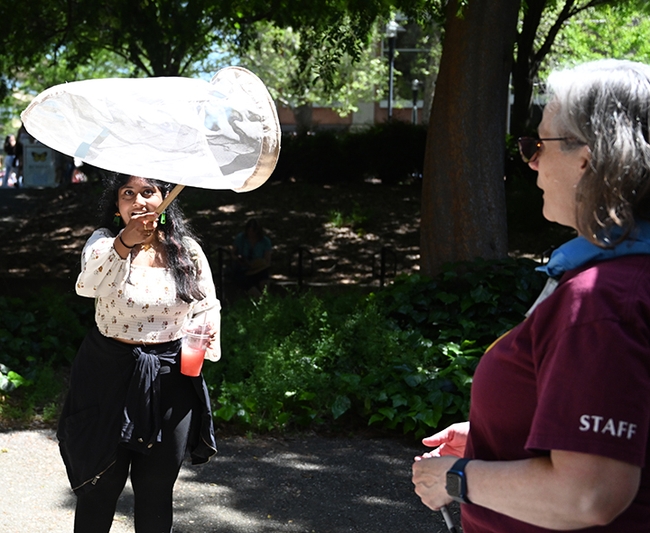
It's a catch! UC Davis undergraduate student Lasya Nalia, majoring in environmental horticulture, nets a paper butterfly tossed by Professor Fran Keller of Folsom Lake College, a Bohart Museum scientist and UC Davis doctoral alumna. (Photo by Kathy Keatley Garvey)
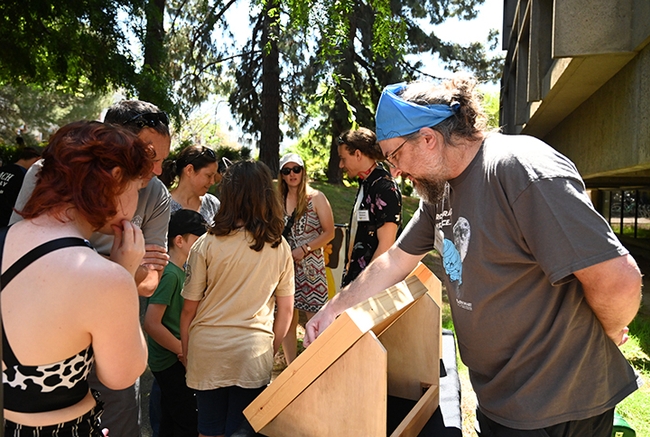
Postdoctoral researcher and arachnologist James Starrett (foreground) and doctoral student and dragonfly expert Christofer Brothers (background) talk to visitors about the insect specimens. (Photo by Kathy Keatley Garvey)

Professor Fran Keller of Folsom Lake College poses with a California dogface butterfly face banner. She is a UC Davis doctoral alumna and a Bohart Museum scientist. (Photo by Kathy Keatley Garvey)




